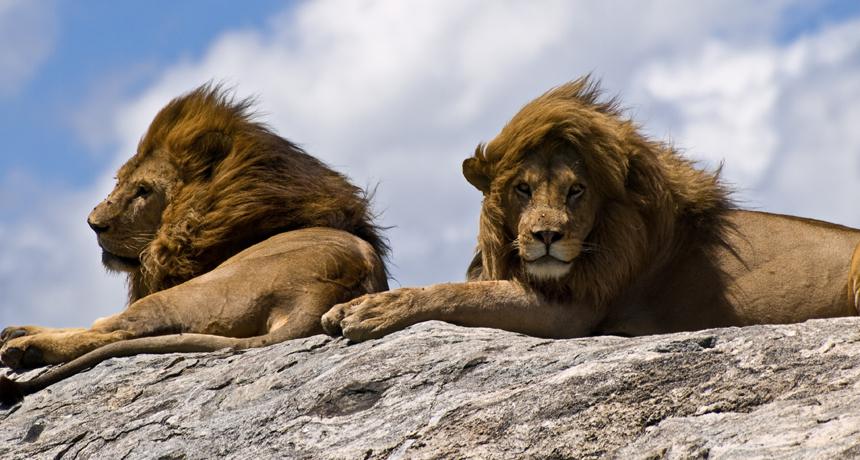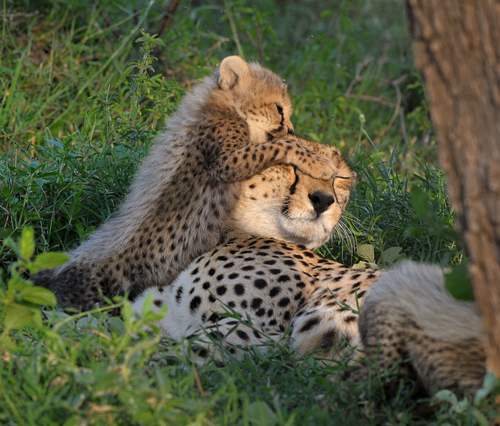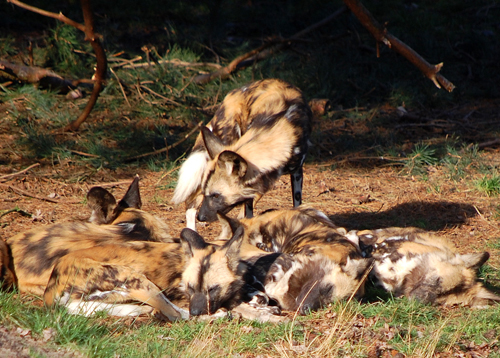Cheetahs, but not wild dogs, manage to live with lions

Lions may be lazy cats, but they dominate on the plains of the Serengeti.
William Warby/Flickr (CC BY 2.0)
- More than 2 years ago
Lions rule. Every kid knows that. Out on the plains of Africa, lions are the top predators. But they’re not the only predators that roam the Serengeti. These lesser mesopredators include cheetahs and African wild dogs.
Top predators like lions keep mesopredators in line. Direct aggression is the most obvious method used — a lion might harass a cheetah, steal an African wild dog’s meal or kill either one, though probably not to eat. The threat of such actions creates what scientists call a “landscape of fear.” And that fear is another way mesopredators are kept in check as the smaller animals take action to avoid the top predator’s threatening advances
People involved in cheetah and wild dog conservation have advocated that efforts to conserve these animals should be focused on areas where lions are rare. After all, studies have found that lions may kill up to 32 percent of African wild dogs and 57 percent of cheetah cubs. And they steal food from both species. There’s been worry that lions might even be capable of completely eliminating cheetahs from some areas.

Between 1966 and 1998, lions thrived in this area of the Serengeti — their numbers tripled. African wild dogs weren’t so lucky — they disappeared from the region (though they can still be found elsewhere in the Serengeti). The cheetah population remained stable. The data from the South African reserves also showed that cheetahs and lions are able to co-exist.
There are a few reasons behind the different outcomes for the wild dogs and cheetahs. Lifestyle is a big factor. The dogs are pack animals, and they tried to survive the growing lion population by avoiding it, particularly during the dry season when most lions retreat to the northwestern woodlands. (There were patterns in abundance of the three species only in the dry season, probably because during the wet season lions are more evenly distributed across the land.) This would seem to have given the dogs a decent chance at survival, particularly during a time when there were plenty of wildebeest and other prey to keep them fed.

Cheetahs, in contrast, are solitary hunters. And they actually keep to the areas of high-lion density in the dry season. The cheetahs are probably able to survive by using strategies to minimize encounters with the larger cats, Swanson and colleagues write. Cheetahs stay more than 100 meters away from lions, and even farther away in open areas than in wooded habitats. Plus, the two cats have different hunting styles that may keep them apart: Lions are ambush predators. Cheetahs need open areas to chase down their favorite meals, Thomson’s gazelles.
The lions probably keep the cheetah population from growing any bigger, though. Lions kill a lot of cheetah cubs. Less than five percent of cubs actually manage to reach their independence. But that appears to be enough to ensure a stable cheetah population, with numbers neither rising nor falling, like the dogs.
In the end, though, the simple view is that solitary cheetahs may just more easily avoid lions than large packs of dogs. There isn’t always safety in numbers, at least when lions are involved.






